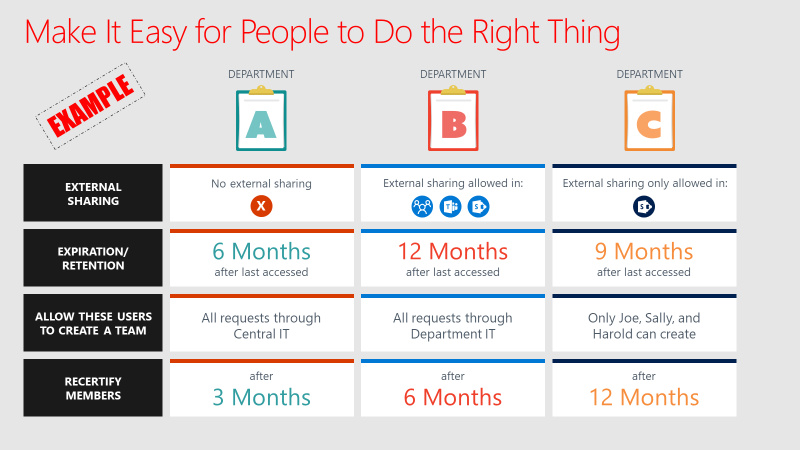Is Your Microsoft Teams Pilot Ready for Production?

Still in the pilot phase of Microsoft Teams? Our free webinar “From Take-Off to Landing: 6 Steps to a Successful Microsoft Teams Pilot” has you covered.
In my previous post, I outlined how to kickstart your Microsoft Teams environment. Now it’s time to consider the next step: production.
In the past, working in an on-premises environment meant that you would typically either Test your environment, Accept it, and bring it to Production (TAP) or also have a controlled development environment beforehand (DTAP). Both of these used to be clear signals that you were in production.

Recently, however, the companies I’ve consulted for with Office 365 didn’t have different tenants in which they could do T and A (Test and Acceptance) for specific groups of people in the company. This was always related to licensing roadblocks and premature infrastructure.
Today, companies are testing and piloting platforms like Microsoft Teams and all its native functionality in the production tenant with live data. However, when you’re already in the cloud with your production data, why should you trial or pilot new functionality in your modern Office 365 production world?
Ready to move on from your Microsoft Teams pilot? Check out this post: Click To TweetQuestions to Consider Before Production
Try to answer the following question when considering moving your pilot into production:
- What were the success criteria that determined it’s time to move to production?
- What were the use cases you used during the pilot phase?
- What were the lessons learned during the pilot phase and what did you do with it for the existing and newly-created containers?
- Can you distinguish your pilot and test data from production? For example, did you design a Governance Foundation like:
- Classification and naming conventions
- Decisions on how Teams are requested, approved, and created
- How policies are enforced, and
- How Teams are being retained, expired, and disposed?

- Did you use what you learned to reprovision, migrate content, and delete the pilot containers?
- Did you gather feedback from your pilot users?
- Did you establish a communications and training strategy when moving to production?
- Did you involve support so this important department is trained and aware of what’s going to be in production?
- Did you establish buy-in from business leadership/stakeholders?
- Do you have the tech foundation in place and are all the appropriate licenses activated?
The list above is not extensive, but it’ll give you a good overview of what kind of challenges to expect.
Transparency and Proof of Value When Writing Use Cases
Simply deploying Microsoft Teams won’t directly provide any kind of special value; the key is to outline believable use cases and establish success criteria. Not only is this useful for calculating ROI, but it also presents the focus of the organization to the rest of the company and stakeholders in a transparent fashion.

Microsoft Teams Governance Considerations
Creating a foundation for governance in Microsoft Teams doesn’t have to be a 10-course meal at a Michelin star restaurant; just keep it simple stupid!
Here’s an example we like to use at AvePoint:

While we won’t go too deeply into Teams governance here (check out this blog post for more on that), I’d like to stress just how important it is to involve the IT helpdesk from day one; if you don’t, it could block your production pipeline.
Give these folks the information they need to understand how your Microsoft Teams environment works and what governance decisions have been made. If you only provide external sharing in SharePoint for a specific department, for instance, IT needs to know about it.
In my opinion, you need to be able to tick all the above boxes and put them into the green zone with confidence before you’re ready to lift off to production. Are there any other qualifications you think need to be met? Feel free to share them in the comments below!
Want more on getting a Teams pilot off the ground? Subscribe to our blog!
With a deep knowledge of Office 365 and SharePoint, Dennis Hoogenraad has an eye for determining optimal Office 365 architecture. He worked as a consultant for 10+ years and facilitated SharePoint and Office 365 transitions for more than 80 companies. He's currently employed as a Solutions Engineer at AvePoint.



